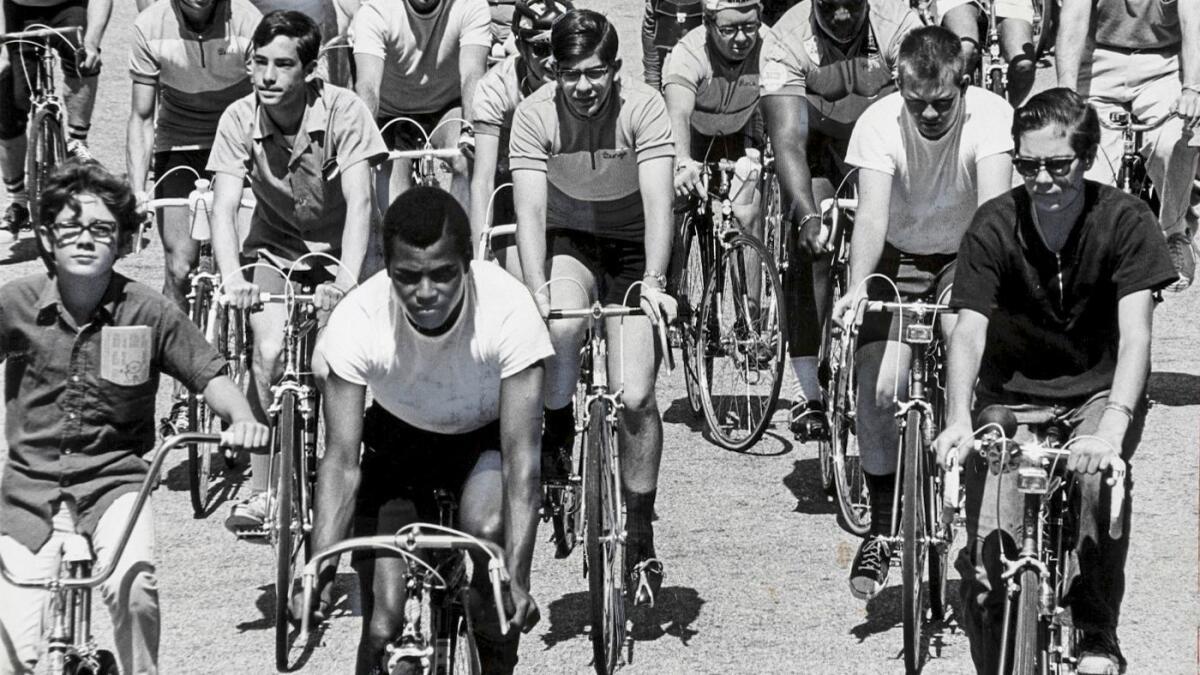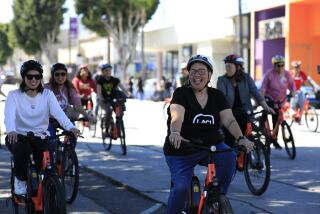Those slacks you’re wearing? You can thank the bicycle for that: a timeline of milestones in cycling

Perhaps not since the invention of the wheel has another innovation — the pairing of two wheels — had such an impact on personal transportation, recreation and fun. Here is a short history of the long-ish evolution of bicycles:
1817: Baron Charles von Drais invents the first two-wheeled method of human-powered transportation, the Draisienne.
1858: Pedals are added to the front wheel of a two-wheeled machine, known as the velocipede, creating a rough ride and the nickname “boneshaker.”
1869: Solid rubber tires replace iron velocipede tires; the term “bicycle” is first used.
1870s: High-wheeled “penny-farthing” bicycles appear, offering more comfort.
1885: John Kemp Starley of Coventry, England, introduces his Rover “safety” bicycle featuring a chain drive, wire-spoke tension wheels and a frame that aligns the seat, handlebars and pedals in a diamond configuration, a bicycle design that persists.
1890s: Removable pneumatic tires filled with air begin to replace solid rubber tires, making for a smoother, faster ride and easier pedaling.
1895: Ogden Bolton Jr. is granted a U.S. patent for his battery-powered bicycle. His hub motor design is still in use today.
1896-1901: Early versions of recumbent bicycles are introduced in Europe and the U.S. and are met with derision.
1896-97: Women’s fashions begin to reflect the need to move and breathe, marking the beginning of the end of stiff corsets and the launch of bloomers and cycling skirts,above.
1898: Mathew J. Steffens patents his electric, belt-drive bicycle in the U.S.
1903: First Tour de France.
1917: Mass production is underway, turning the bicycle from a novelty to affordable personal transportation.
1920-1940s: Bicycle use declines as automobile industry grows, but children take to heavy motorcycle- and airplane-inspired designs.
1939: Whizzer Co. introduces a four-stroke engine that can mount on Schwinn bicycle frames, a midcentury example of bicycles designed to emulate motorcycles.
1960s: Racing bicycles with dropped handlebars become popular.
1963: The Schwinn Sting-Ray is released, beginning a revolution in bicycle design.

Bicycle riders form into close ranks as they set forth from Shatto Recreation Center.
1970: Ten-speed road bicycles, above, become the rage, especially as the 1973 oil embargo makes bicycle commuting more attractive.
1970s: Riders in Marin County, using beach cruiser frames, adapt bicycles for all-terrain downhill riding, launching the mountain biking boom.
1993: Yamaha offers electric bicycles with a power-assist, pedal-sensor system.
2016: Fountain Valley-based Pedego Electric Bikes expands to 90 retail stores worldwide.
Sources: Starley bikes, the League of American Bicyclists, the National Museum of American History, Bicycles & Bikes, the Electric Bicycle Guide
More to Read
Sign up for The Wild
We’ll help you find the best places to hike, bike and run, as well as the perfect silent spots for meditation and yoga.
You may occasionally receive promotional content from the Los Angeles Times.






